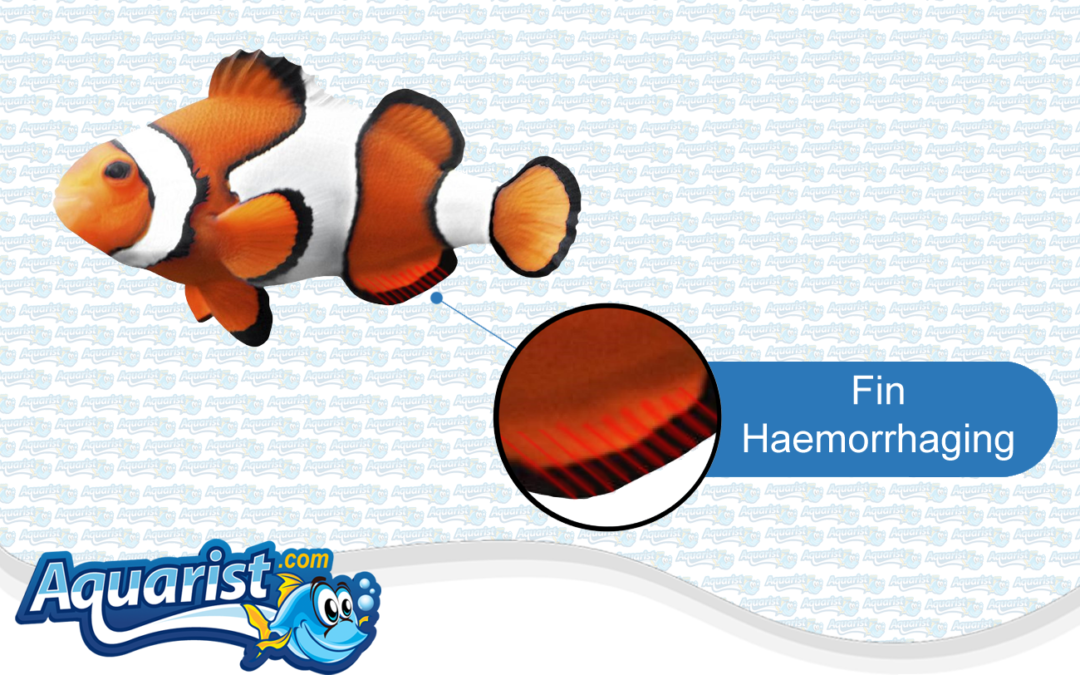Comprehensive Guide to Saltwater Fish Diseases: Fin Haemorrhaging
Fin haemorrhaging is a condition in saltwater fish characterized by the appearance of red streaks, blood spots, or bleeding within the fin tissues. This condition can be caused by various factors, including physical injury, bacterial infections, or environmental stressors. If left untreated, fin haemorrhaging can lead to further complications such as fin rot or secondary infections. This guide provides a comprehensive overview of fin haemorrhaging in saltwater fish, covering its causes, symptoms, treatment options, and preventive measures.
What is Fin Haemorrhaging?
Fin haemorrhaging refers to the presence of bleeding or blood accumulation in the fin tissues of fish. The condition can affect one or multiple fins and may appear as red streaks, patches, or spots. Haemorrhaging can result from direct physical trauma, bacterial infections, or stress-related issues that weaken the fish's immune system and make them more susceptible to injury and disease.
Causes of Fin Haemorrhaging
Several factors can lead to the development of fin haemorrhaging in saltwater fish. The most common causes include:
- Physical trauma: Aggressive tank mates, sharp decorations, or improper handling can cause injuries that result in bleeding within the fins.
- Bacterial infections: Bacteria such as Aeromonas and Pseudomonas can infect the fins, leading to inflammation and haemorrhaging.
- Poor water quality: High levels of ammonia, nitrite, or nitrate can stress fish and damage their fins, making them more prone to haemorrhaging.
- Environmental stress: Factors such as rapid changes in temperature, pH, or salinity can weaken a fish's immune system and contribute to fin damage.
- Vitamin deficiencies: A diet lacking in essential nutrients, especially vitamins C and E, can lead to weakened blood vessels and increased susceptibility to haemorrhaging.
Symptoms of Fin Haemorrhaging
Recognizing the symptoms of fin haemorrhaging early is essential for effective treatment. Common signs include:
- Red streaks or patches: The appearance of red lines, spots, or patches within the fin tissues indicates bleeding or inflammation.
- Fin erosion: In some cases, the affected areas may begin to erode, leading to fin fraying or tissue loss.
- Clamped fins: Fish may hold their fins close to their body due to discomfort or pain.
- Lethargy: Affected fish may become less active, swim slowly, or spend more time resting on the bottom of the tank.
- Loss of appetite: Fish with severe fin haemorrhaging may stop eating or show little interest in food.
Treatment Options for Fin Haemorrhaging
Treating fin haemorrhaging involves addressing the underlying cause, improving water quality, and providing supportive care. Follow these steps to manage the condition effectively:
- Improve water quality: Regularly perform water changes and test for ammonia, nitrite, and nitrate levels. Maintaining optimal water parameters can reduce stress and promote healing.
- Use antibacterial medications: If a bacterial infection is suspected, treat the fish with antibacterial medications such as kanamycin or erythromycin to help combat the infection.
- Reduce environmental stress: Ensure that the aquarium environment is stable, with consistent temperature, pH, and salinity levels. Avoid sudden changes that can stress the fish.
- Provide a nutritious diet: Feed fish a high-quality diet that includes vitamin supplements to support healing and strengthen the immune system. Consider adding vitamin-enriched foods or supplements that contain vitamins C and E.
- Isolate affected fish: If possible, quarantine the affected fish in a separate tank to monitor their condition and prevent the spread of potential infections.
Preventing Fin Haemorrhaging
Prevention is the best approach to managing fin haemorrhaging in saltwater fish. The following steps can help reduce the risk of this condition:
- Maintain optimal water quality: Regularly test and monitor water parameters, including ammonia, nitrite, nitrate, and pH levels. Perform routine water changes to keep the tank clean and healthy.
- Choose compatible tank mates: Avoid keeping aggressive or territorial species together to reduce the risk of injuries and stress-related fin damage.
- Provide a safe tank environment: Remove sharp or rough decorations that could cause injury, and ensure that the tank is spacious enough for all fish to swim freely without overcrowding.
- Feed a balanced diet: Provide a varied diet that includes high-quality foods and vitamin supplements to boost the immune system and promote overall health.
- Handle fish with care: Avoid rough handling of fish during tank maintenance, as this can cause physical trauma and fin damage.
Pro Tips for Treating and Preventing Fin Haemorrhaging
- Act quickly: Early intervention can prevent minor fin haemorrhaging from developing into more serious infections. Treat symptoms as soon as they appear.
- Monitor water quality closely: Poor water conditions can exacerbate fin haemorrhaging. Regularly check water parameters and make adjustments as needed.
- Use natural healing aids: Products like Melafix, which is made from tea tree oil, can be used as a natural remedy to support healing and reduce inflammation.
- Disinfect the quarantine tank: After treating infected fish, thoroughly clean and disinfect the quarantine tank and any equipment used to prevent future infections.
Common Mistakes to Avoid When Treating Fin Haemorrhaging
To ensure effective treatment and avoid complications, be mindful of these common mistakes:
- Stopping treatment too early: Even if the bleeding appears to stop, continue the full course of treatment to ensure the underlying cause is addressed.
- Overusing medications: Avoid using multiple medications at once without guidance, as this can stress the fish and negatively impact water quality.
- Not addressing underlying causes: Simply treating the symptoms without addressing poor water quality, aggressive tank mates, or other stress factors will likely result in recurrence.
- Skipping quarantine for new fish: Introducing new fish without quarantine can bring pathogens into the main tank, increasing the likelihood of disease outbreaks.
Understanding the Impact of Fin Haemorrhaging on Fish Health
Fin haemorrhaging can significantly impact the health and well-being of saltwater fish. If left untreated, it can lead to fin rot, secondary infections, and stress-related health problems. Addressing the underlying causes, maintaining optimal water quality, and providing supportive care are essential for promoting healing and preventing further complications. Regular monitoring and early intervention can help ensure a quick recovery and long-term health for your fish.
Conclusion
Fin haemorrhaging is a serious condition that can affect saltwater fish, leading to bleeding, inflammation, and potential secondary infections. By recognizing the symptoms, understanding the causes, and using effective treatment methods, you can help protect your fish from this condition. Always maintain optimal water quality, provide a safe tank environment, and take preventive measures to minimize the risk of fin injuries and infections. With proper care and timely intervention, you can ensure the health and well-being of your saltwater fish.

